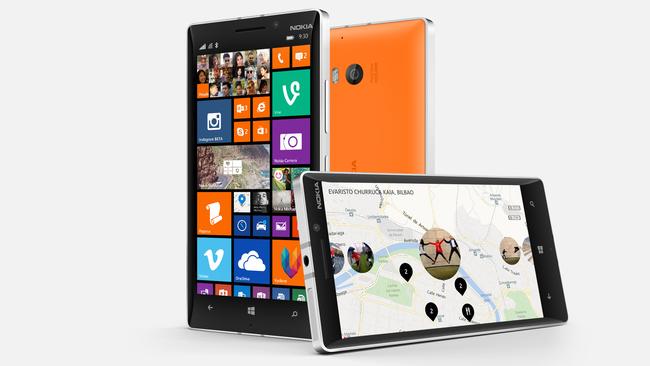Lumia less like a brick but Nokia still lags the field on apps
NOKIA’S new flagship, the Lumia 930, is possibly the most attractive high-end phone of the Lumia range.

NOKIA’S new flagship, the Lumia 930, is possibly the most attractive high-end phone of the Lumia range.
Lumias generally are brick-like. Here, when you combine the phone’s aluminium body, polycarbonate back, the bright 5-inch full HD AMOLED display and thin bezel around the Windows 8.1 tile home screen, it looks stylish, even though it’s a bit heavy and thick.
Screen resolution, 441 pixels per inch compared with the iPhone5S’s 326ppi, is exceptional.
Nokia makes the best phone cameras and the 20 megapixel PureView back-facing camera on the 930 is no exception. The phone is powered by a 2.2 Gigahertz quad-core processor.
All of this quality makes you wonder why Nokia high-end phone sales aren’t going gangbusters.
Instead, according to market research firm Telsyte, Nokia has less than 5 per cent smartphone penetration in Australia.
The answer of course is apps — the Windows phone environment doesn’t have the range of apps available to iOS and Android users — and being way too late to market behind Apple and Samsung.
The fact people are comfortable using Apple and Android has undermined Microsoft’s ability to leverage its huge corporate Windows presence to promote Windows-based phones.
Further, the bring-your-own-device phenomenon means users don’t need a Windows phone to have it play nicely with their work’s Microsoft Office network.
There’s lots to like about the new Nokia 930 and Windows 8.1. Possibly the most innovative feature is Nokia SensorCore, hardware and software that can monitor the phone’s sensors without draining power.
The phone knows when you’re walking and running, even when it’s in your pocket. Data is available to apps such as Health & Fitness. SensorCore is Nokia’s foray into health and activity monitoring but, like so many things, it’s belated: Apple and Samsung are already active here.
The 930, like Nokia phones generally, has Here Maps, my favourite Nokia app. It’s better than the likes of Google Maps as it doesn’t need a cellular network to operate, just GPS.
You download any country’s maps for free when you are in a WiFi area and the phone accesses those stored maps when you are on the go and even out of network range. I could have used this in a recent trip to Laos, to areas without cellular data.
One nice aside is how activity monitoring plays with Nokia’s Here Maps. Before you take off on a walk or jog, you can input your exercise route into Here Maps while in WiFi range. Here Maps will direct you, even without a network connection, and SensorCore will collect your activity data.
Another nice feature is World Flow Keyboard. It brings the Android Swype phenomenon to Lumia. Instead of pressing keys to pen a message or email, you glide between the keys. I’ve found it a fast and powerful way to get out a message, and now it’s on Lumia.
Sadly, Nokia hasn’t included a microSD card nor a removable battery on the Lumia 930. You’re stuck with the phone’s 32 Gigabytes of internal storage and juice from the one cell. But it is offering these on other handsets. The Lumia 635, for example, a budget phone released at the same time costing just $279, has both features. Why does Nokia not offer them to their high end users?
The Lumia 930 also lacks an HDMI out port for showing its high-definition video on your TV.
The phone is available in orange, green, white, and black.
Rating: 7.5/10
Price: $729 outright or on contract.


